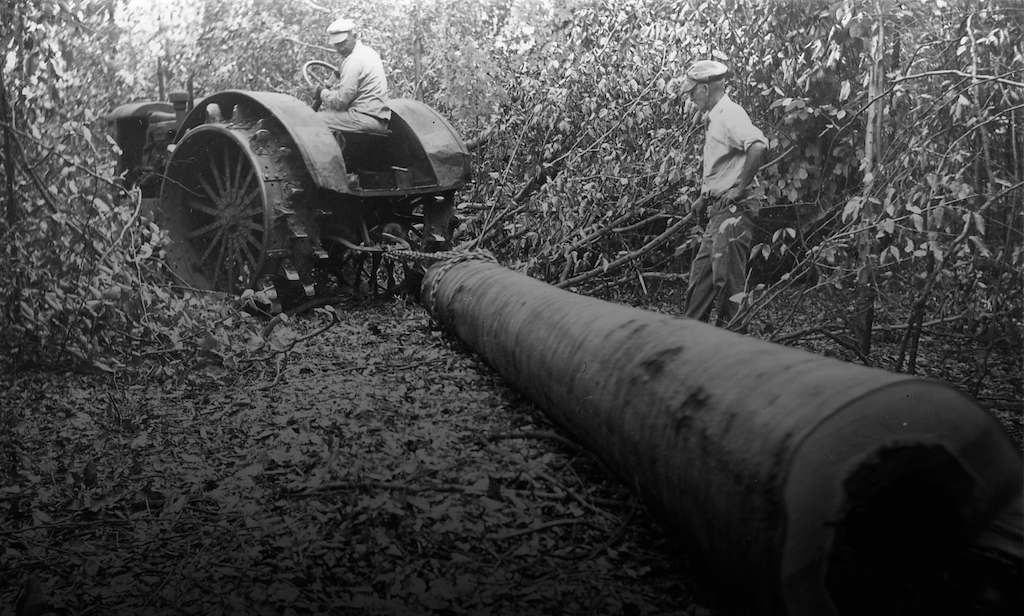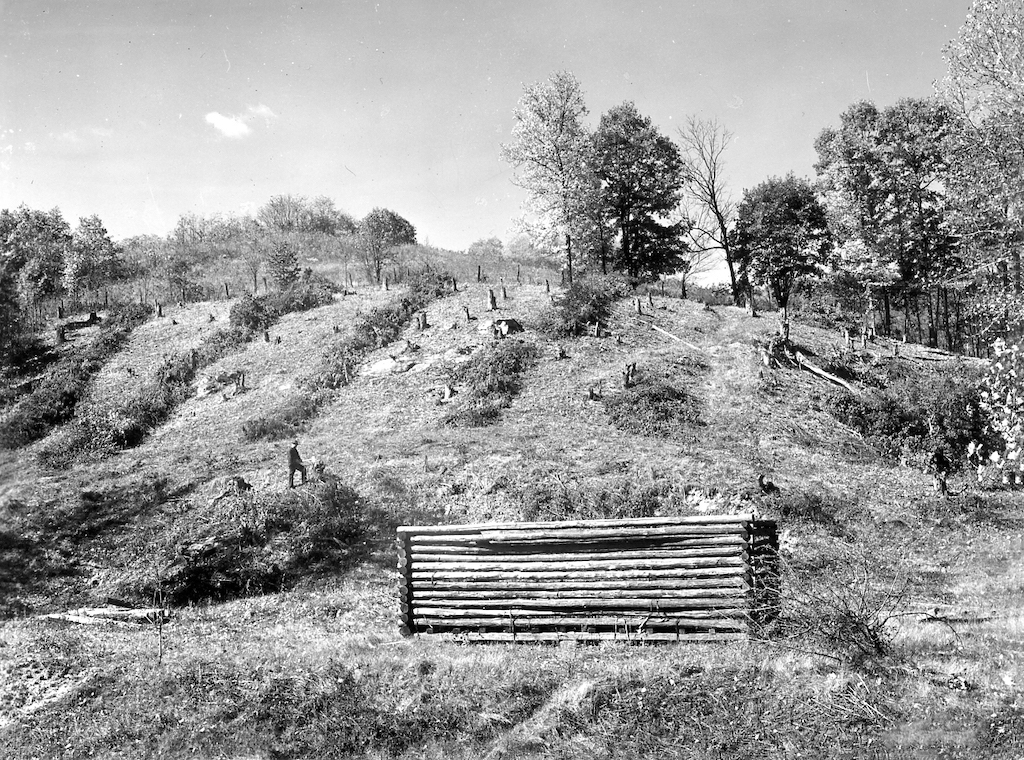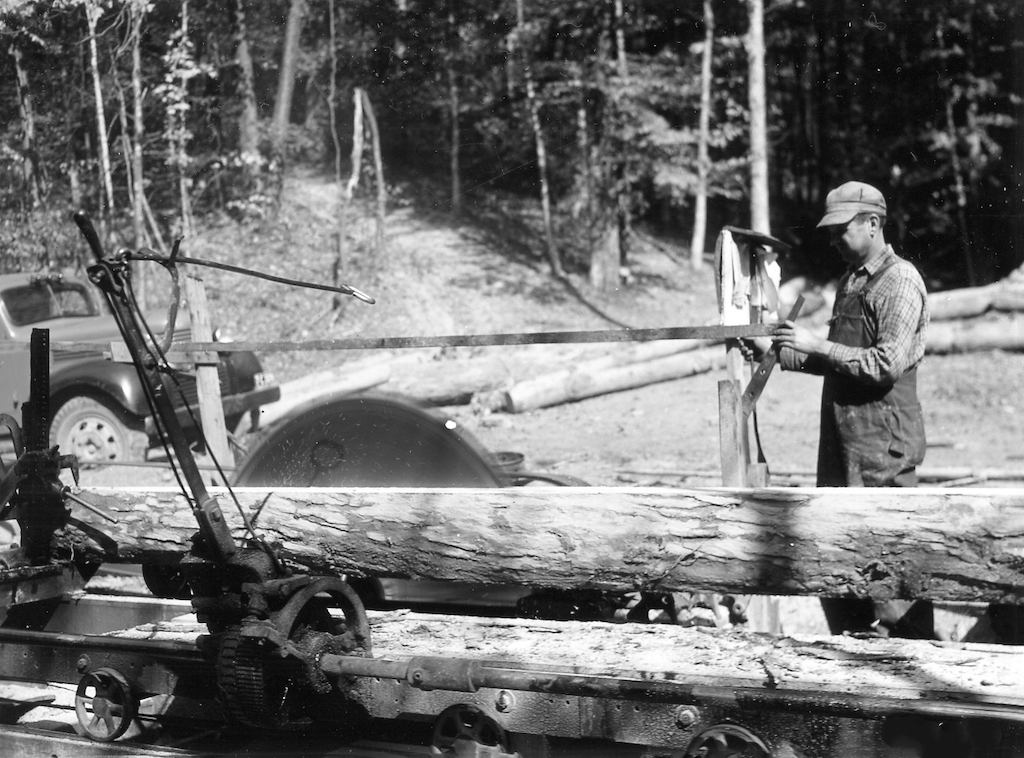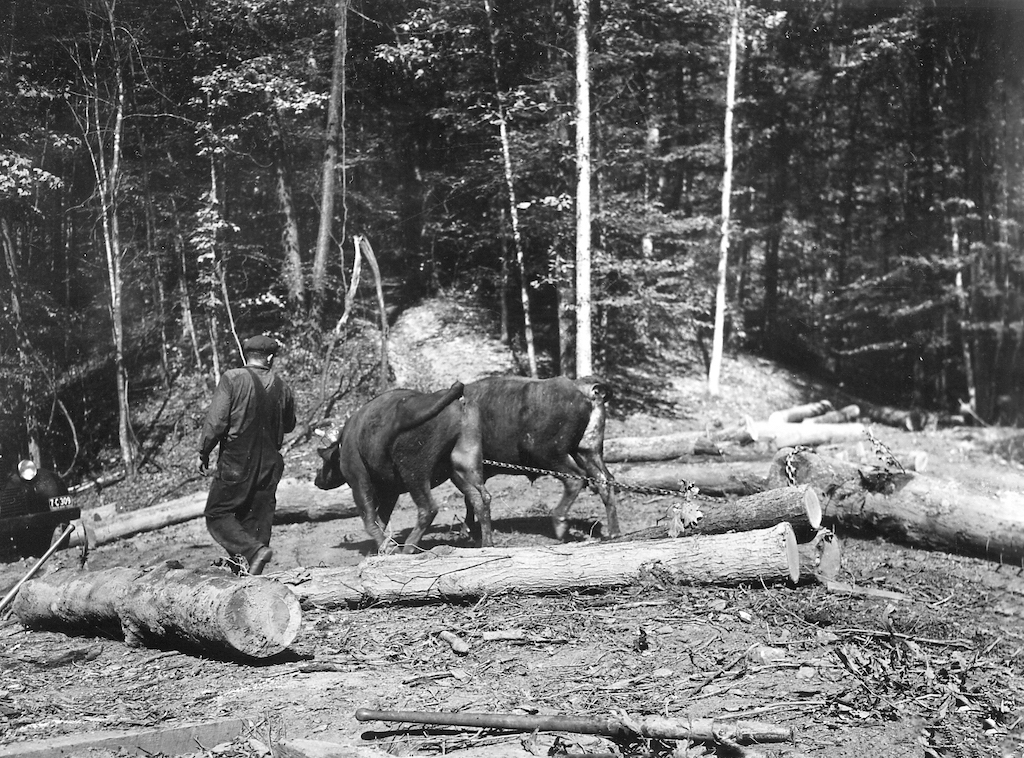Deforestation
Story by Sam Warren
For thousands upon thousands of years, the rolling hills of Southeast Ohio were carpeted in thick, seemingly endless forest. In fact, nearly the entirety of the state was covered in old growth forest. That is, until the late 1700s. As European settlers swept into the state and forcefully removed indigenous peoples that had populated the area for generations, Ohio’s forests began to feel the pressure of colonization and settlement as well.
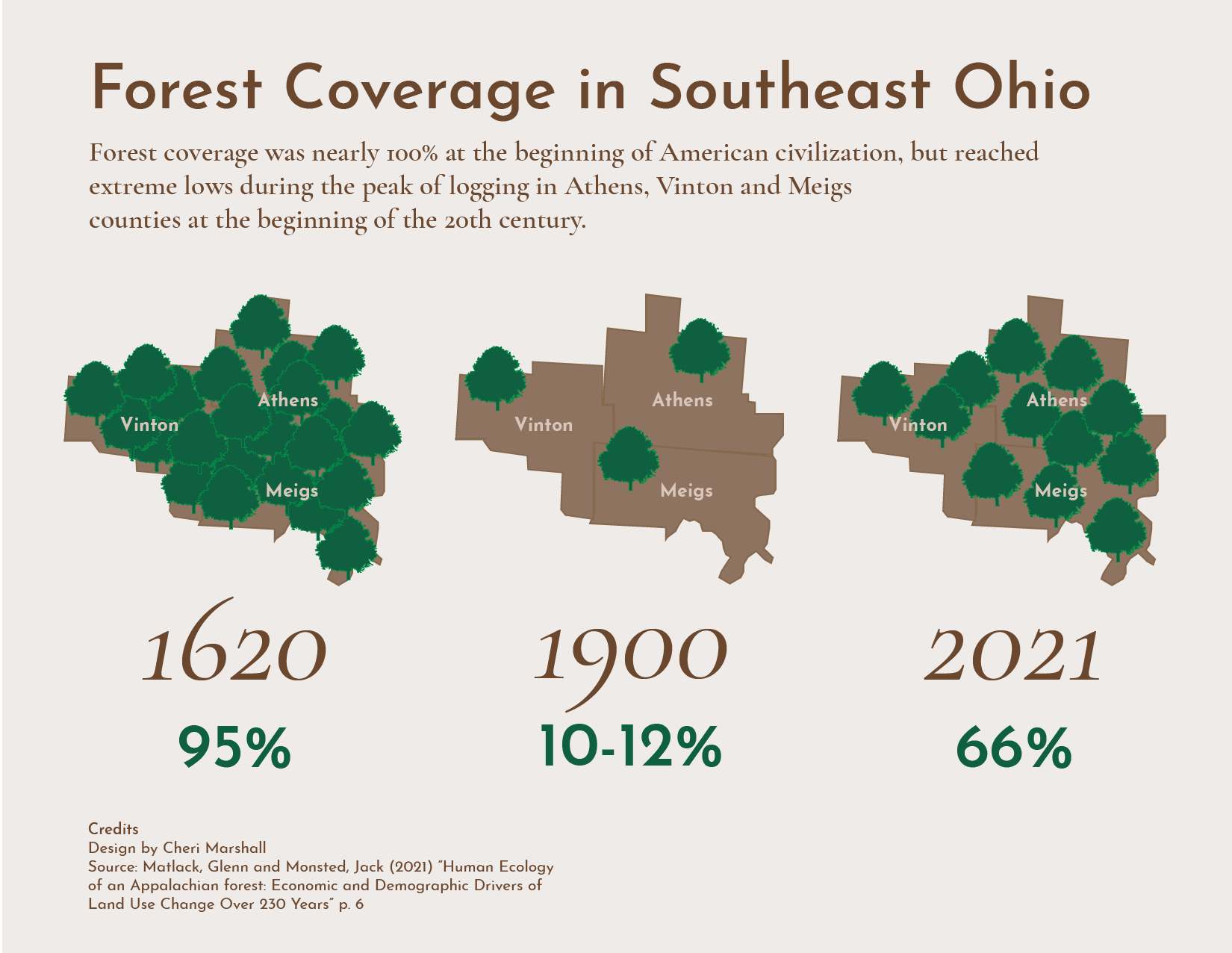
As the need for farmland increased the forest coverage decreased, until the reforestation process began.
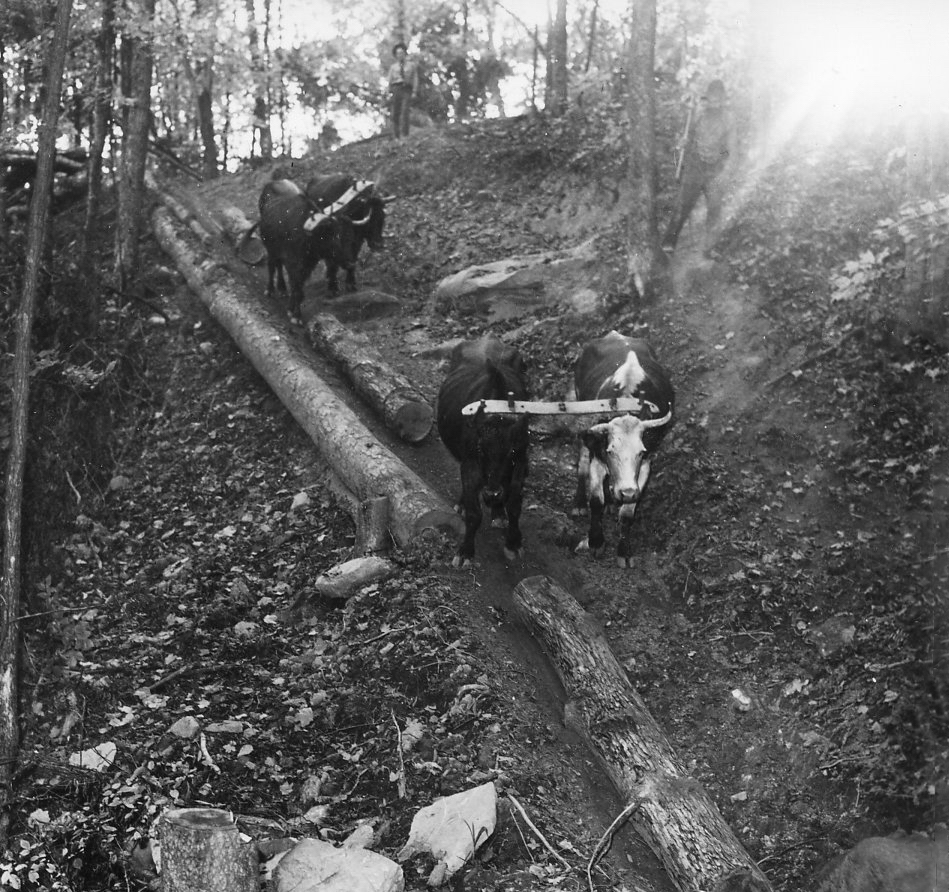
Three oxen pulling logs down a steep embankment on the trail to the sawmill in the Wayne National Forest - Image from 1940 | Courtesy of the Southeast Ohio History Center
Between 1795 when settlers arrived and the turn of the 20th century, Ohio’s forests were decimated. In Athens County, only 10% of the land remained in untouched forest, compared to nearly 100% a century prior. Native Americans had long practiced methods of sustainable burning and forestry that had kept important ecological cycles going in the forests– with their disappearance from the landscape, forests that weren’t immediately cleared lost this advantageous aspect of human life in the region.
Without the forests, Southeast Ohio began encountering many widespread ecological problems. Loss of crucial ecosystem services such as water filtration and carbon sequestration were rampant, as well as erosion and degradation of the soil that led to dust bowls, loss of arable land, and immense loss of wildlife and ecosystem diversity.
Reforestation
By the early 1900s, it was clear that something needed to be done. Natural devastation as a result of overzealous logging of forests along the entirety of the eastern United States was a problem that the US Government and concerned citizens alike could no longer ignore.
“You have to go back to the 1800s to understand why there was a need for a National Forest here in Southeast Ohio”
We sat down with Kyle Brooks at the Wayne National Forest to get his perspective on the land's history and where it's headed in the future | Audio by Sam Warren
